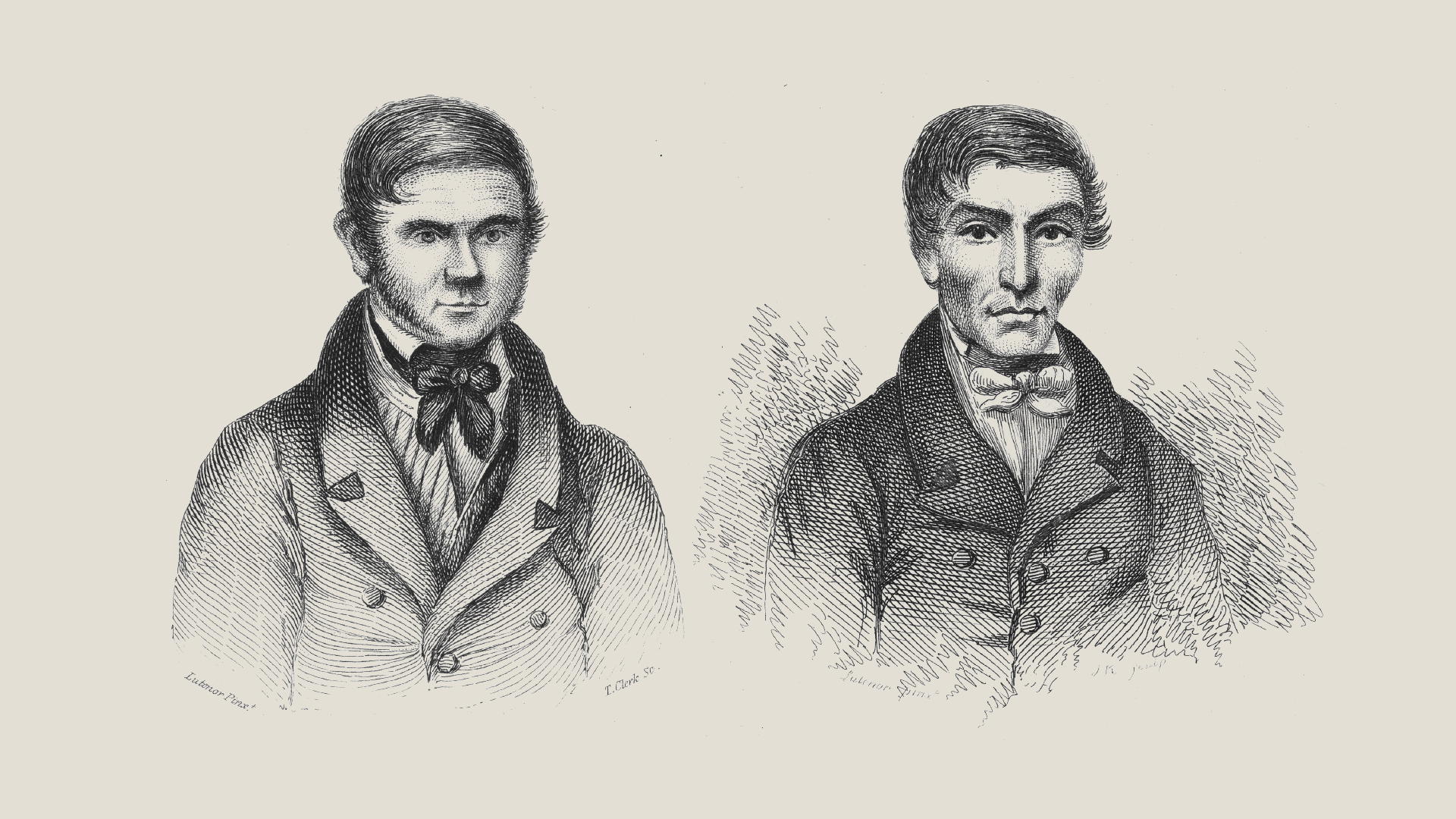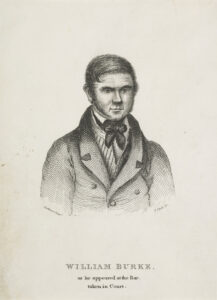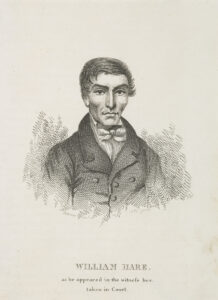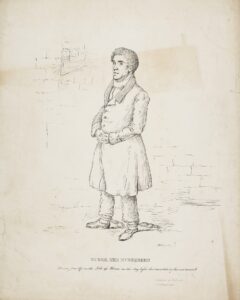5 things you didn’t know about Burke and Hare

The infamous duo had close links to our very own Anatomical Museum. But did you know these lesser known five facts about the pair?
William Burke and William Hare were serial killers active in Edinburgh between 1827 and 1828. They sold their victims’ bodies to the anatomist Robert Knox. Knox and his colleagues dissected the bodies as part of their lectures.

William Burke
Edinburgh in the 19th century was a leading centre for anatomical teaching. Scottish law at the time placed heavy restrictions on dissections. Only certain bodies, such as those of prisoners, could be dissected lawfully.
With growing numbers of anatomical students, the legal supply of bodies couldn’t keep up with demand. Edinburgh saw a sharp increase in grave robbing.
But Burke and Hare had a different way of sourcing bodies for Knox’s lectures.

William Hare
The pair killed at least 16 people, usually lodgers or visitors to their home. They murdered their victims by suffocating them, which meant they left no marks on the bodies.
They were finally arrested in November 1828 after murdering their final victim, Margaret Docherty. Burke was found guilty and was hanged in Edinburgh’s Lawnmarket in January 1829. Hare testified against him and was allowed to flee.
Burke and Hare’s murderous tale has been retold in books, films and podcasts, and you’ll hear their story on walking tours all over Edinburgh. But there are plenty of strange and bizarre details you may not have heard about before.
Warning … this content may not be suitable if you’re squeamish!

William Burke in jail, drawn the day before his execution
1. Burke’s body was dissected and his skin was made into a notebook
On 1 February 1829, Burke’s body was publicly dissected by Alexander Monro III at the University’s anatomy theatre. During the two hour dissection, Monro used Burke’s blood to write: “This is written with the blood of Wm Burke, who was hanged at Edinburgh. This blood was taken from his head.”
After the dissection, Burke’s skeleton was given to the Anatomical Museum, where it remains to this day alongside his life and death masks. There is also a pocketbook in Edinburgh’s Surgeons’ Hall Museum bound with Burke’s skin. An inscription on the back reads ‘Executed 28 Jan 1829’, and there is a pencil inside.
2. Hare shot and killed his own horse at the peak of the murdering spree
Burke and Hare transported most of their victims’ bodies to Knox in a tea chest. But this tea chest proved too small when the pair murdered two of their lodgers at once – identified only as “an old woman and a dumb boy, her grandson” in Burke’s confession.
The tea chest they normally used was too small, so they forced the corpses into a herring barrel and loaded it onto a cart. Hare’s horse refused to pull the heavy load any further than Grassmarket, and a porter had to be called to help transport the container to Surgeons’ Square. Back home in Tanner’s Close, an angry Hare shot and killed the horse.
3. Nobody knows what happened to Hare
Hare’s testimony at Burke’s trial gave him immunity from prossecution. After Burke was executed, Hare was released from custody and fled on the mailcoach to Dumfries. But he was recognised by one of his fellow passengers and news of Hare’s arrival spread quickly through the town.
The police managed to help him escape the crowd that had gathered around his lodgings, and he was taken out of town and towards the English border. From there, he disappeared without a trace.
Where did Hare end up? Some believe that he travelled to London where he was blinded in a lime pit and lived on the streets as a blind beggar. Others say that he returned to Ireland after leaving Dumfries.
We’ll probably never know for sure.

Execution of William Burke
4. The people of Edinburgh paid good money to watch Burke’s execution
Burke’s notoriety meant that a lot of people in the city wanted to watch him hang. Historians estimate that a crowd of around 25,000 gathered to watch him at the gallows.
With a crowd so large, people living in the tenements overlooking the scaffold hired out their rooms so people could get a better view of the execution. Prices for a window view ranged from 5 to 20 shillings.
5. A new word was coined in the aftermath of the murders
The infamous Burke and Hare murders have left their mark on English vocabulary too.
A new word, ‘burking‘, was coined – a verb meaning ‘to smother a victim or to commit an anatomy murder’.
A rhyme also circulated around Edinburgh:
Up the close and doon the stair,
But and ben’ wi’ Burke and Hare.
Burke’s the butcher, Hare’s the thief,
Knox the boy that buys the beef.
Find out more
You can find out more about Burke and Hare’s story – and see Burke’s skeleton – at the University’s Anatomical Museum.
And if you’re interested in studying Anatomy (the 21st century way), consider one of our postgraduate programmes:
- Online PgCert and PgDip qualifications in Anatomical Sciences
- On-campus masters degree in Clinical Anatomy
- On-campus masters degree in Human Anatomy
(Thomas Clerk & George Andrew Lutenor. 'William Burke as he appeared at the Bar, taken in Court' (1829), National Galleries of Scotland. Licensed under Creative Commons Attribution-NonCommercial 2.0 Generic (CC BY-NC 2.0).)
(Thomas Clerk & George Andrew Lutenor. 'William Hare as he appeared at the witness box, taken in Court' (1829), National Galleries of Scotland. Licensed under Creative Commons Attribution-NonCommercial 2.0 Generic (CC BY-NC 2.0).)
(Walter Geikie. 'Execution of William Burke' (1829), National Galleries of Scotland. Licensed under Creative Commons Attribution-NonCommercial 2.0 Generic (CC BY-NC 2.0).)
(Unknown. 'Burke, the murderer' (1829), National Galleries of Scotland. Licensed under Creative Commons Attribution-NonCommercial 2.0 Generic (CC BY-NC 2.0).)

